Today, I am reviewing a really cool new saxophone ligature made by Zac ligatures in Italy. I heard about the Zac saxophone ligature from a fan of Neffmusic who asked me if I could review the Zac ligatures because he was curious about them. I reached out to Alberto at Zac ligatures and he was nice enough to send me two Zac ligatures to try out and perhaps review here on the site.
I was really interested in trying the Zac ligature because I have read many times over the years (mostly on clarinet chatrooms and forums) that the best possible mouthpiece ligature is a string ligature. Since one of the options for using this ligature involves just the strings on the reed, I figured this would be a great way to finally try a string ligature out. I was very excited!
Zac Hard Rubber Tenor Sax Mouthpiece Ligature
Upon my request, Zac ligatures sent me a saxophone ligature for a hard rubber Otto Link sized tenor saxophone mouthpiece as well as a ligature that is sized for a metal Otto Link tenor saxophone mouthpiece.
The ligatures Alberto at Zac ligatures sent me are the satin brass versions of the Zac ligature. They also have a variety of models available in satin solid silver, brass polished rhodium plated, polished solid silver rhodium plated, polished brass guaranteed three micron 24 k gold and polished solid silver guaranteed three micron 24 k gold. The resonators come in satin brass, solid silver and on demand they will also plate the metal resonator in silver or gold if requested.
Zac Mouthpiece Ligature in Solid Silver and Silver and Gold Plating
The ligature components are the same for each ligature but the size is altered by the length of the fiber cables that connect to the top of the ligature and then wrap around the saxophone mouthpiece. The wider the mouthpiece, the longer the ligature cables will need to be.
Zac Metal Otto Link Saxophone Mouthpiece Ligature
There are three distinct ways to use the Zac saxophone mouthpiece ligature.
- With just the cables holding the reed onto the table of the mouthpiece
- With a brass resonator plate that holds the reed onto the mouthpiece
- With an ebony resonator plate that holds the reed onto the mouthpiece
I asked Alberto at Zac ligatures what he thought the differences were between using the Zac ligature with the brass resonator plate, ebony resonator plate or just the cables and this was his response:
“There are musicians who use only the cables, both in jazz music and in classical music, because they want freedom of sound emission. With the brass resonator the sound effect you get is more volume, more sound projection and stability over the entire range of notes. The ebony resonator maintains good volume and good sound projection but its main point is the elegance and warmth of the sound. These are some of the possibilities of sound available with the Zac Ligature.” -Alberto
The top part of the Zac ligature is a solidly built brass mechanism that has four corner hooks that the cables can be attached to fairly easily. The top part also has a solid screw that is used to adjust the tightness of the ligature. The bottom of this screw has a replaceable rubber pad that protects the top of the saxophone mouthpiece as you tighten the ligature. Here is a link to download the “Zac Ligature Use and Assembly Manual” that has all of the Zac ligature parts and in-depth directions on how to use them. (clicking on the link starts the download automatically)
Zac Saxophone Mouthpiece Ligature
The word “string” to describe what you see in the photo above is really a disservice to this material which is called Dyneema fiber. I asked Alberto at Zac ligatures if the Dyneema fiber stretched over time or ever needed to be replaced and this was his response:
“The strings are highly technical, they are used for paragliding. They are made of an external protective sock in polyester and the internal core is Dyneema fiber. The strings do not stretch over time and will not need to be replaced in the future.”
I found this online when doing a google search for Dyneema:
Dyneema® fiber is 15x stronger than steel at the same weight, with a tensile strength up to 43 cN/dtex. As well as its extraordinary strength, Dyneema® excels in cut and abrasion resistance and has a high resistance to chemicals and UV.
That sounds pretty durable and strong! Although some people might describe these as “strings”, I will be using the word “cables” in this review just because I feel like it represents the extraordinary strength these Dyneema fiber cables have. “Strings” just sounds like something too dainty and weak that would break and or stretch pretty easily and that is not what these Zac ligature cables are.
Zac Saxophone Mouthpiece Ligature
In the above photo, you can see the rubber bumper that touches the top of the saxophone mouthpiece. Although the bumper is screwed down onto the sax mouthpiece to tighten the ligature, the rubber bumper does not turn with the turning of the screw. This is a positive and insures that the rubber bumper does not wear out from friction against the mouthpiece when turning the screw to tighten the ligature.
In the photos below, you can see the contact point for the rubber bumper on a typical hard rubber link as well as a typical metal Otto Link mouthpiece.
Zac Hard Rubber Saxophone Mouthpiece Ligature
Zac Metal Otto Link Saxophone Mouthpiece Ligature
Below, is a photo of the Zac ligature just using the Dyneema fiber cables to hold the reed in place on a metal Otto Link tenor saxophone mouthpiece. The cables can be slid a little bit forward or backward and then the ligature tightened. This allows you to experiment with the exact placement of the cables on the saxophone reed.
Zac Metal Saxophone Mouthpiece Ligature with just the Dyneema Fibers holding the Reed
I thought the “cables only”method would perhaps not hold the saxophone reed on the mouthpiece as firmly as the plates but the fiber cables are so strong, and the tightening mechanism on top works so well, that you really get a lot of tension on the cables holding the reed. I could not budge the reed at all when trying to push the reed out of place with my thumb when the ligature was tightened.
This prompted me to experiment with the tightness of the ligature and I found that I could loosen it quite a bit before the reed would move on me. As with all ligatures, I would suggest experimenting with the tightness of the ligature to see how it affects the tone and response of the saxophone reed.
Below are two photos of the Zac ligature on a metal Otto Link tenor saxophone mouthpiece with the brass resonator plate on the saxophone reed.
Zac Metal Saxophone Mouthpiece Ligature with Metal Plate holding the Reed
Zac Metal Otto Link Saxophone Mouthpiece Ligature
The metal plate of the Zac ligatures has two grooves in the metal where the fiber cable can be pushed into the grooves. Once the fiber cable is firmly inserted into these grooves, the plate can be slid to the left or the right on the cable to center it on the reed but the cables do not come out of the grooves very easily.
Zac Saxophone Mouthpiece Ligature Dyneema Fiber Cables with Brass Resonator
Although having the cables attached securely to the brass plate is a positive, I found getting the cables into those grooves on the metal plate to be quite a task. They do not just snap in with some moderate finger pressure. Matter of fact, I couldn’t get them in with maximum finger pressure! What I had to do was use a pair of pliers to snap the cables into the grooves.
The other method that worked was to line the cables up with the grooves and then lean on the back side of the plate on my kitchen counter with most of my weight to get them to snap into place in the grooves. I guess that is a testament to how strong these Dyneema fiber cables are!
Zac Metal Otto Link Saxophone Mouthpiece Ligature
Once the Zac ligature has been tightened on the saxophone mouthpiece, I found it to be very solid and stable. I would still refrain from grabbing the sax mouthpiece around the ligature to move it on the cork but I did attempt this a few times while using the Zac ligature and the ligature did not move on me when tightened.
Zac Metal Otto Link Saxophone Mouthpiece Ligature from above
One of the coolest benefits to the Zac ligature is that it has one screw to tighten or loosen the ligature from above. This makes it very easy to experiment with ligature tightness and looseness while you are playing. I could just hold a note on the saxophone, and while holding the note, just reach up with my right hand and either tighten or loosen the ligature while still playing. This allowed me to experiment with the tightness of the cables and see how loosening or tightening them would affect the sound and response of the reed.
The last way to use the Zac saxophone ligature is with the ebony resonator plate. The ebony resonator does not have any grooves for the cables to slide into but comes with the cables running through the resonator as you can see in the photo below.
Keep in mind, that if you order just the ebony resonator with the ligature, you would not have the option to take off the resonator and just use the cables. The ebony resonator does not come off the cables.
Zac Saxophone Mouthpiece Ligature with Ebony Resonator
The Zac ligature also comes with a handmade leather mouthpiece cap that fits easily over the ligature while it is on the mouthpiece as you can see in the photo below. This is an added benefit as I have some ligatures in my collection that didn’t come with a mouthpiece cap and it can be quite the ordeal to try to find a cap that will fit them.
Zac Saxophone Mouthpiece Ligature with it’s Leather Cap
I have included four sound clips at the end of this review although I am not 100% confident my impressions while playing these ligatures can be noticed or heard from an outside listener. I believe I can hear the differences, but I am biased because I noticed these differences over and over again when trying these ligature variations out over the last few months.
In the four clips below, I tried to play the same lines for each clip so you can compare the clips to each other. I chose to post these as lossless wave files in the hopes of getting the most detail out of each clip. You will get the best result when listening to the clips if you use quality speakers or headphones.
I tried my best to keep the reed exactly in the same place as I changed ligatures between clips. I also recorded standing in the exact same spot and pointing the bell of the saxophone right at the same spot on the microphone.
The one differential in this sound clip exercise that I couldn’t measure or attempt to control was the tightness of the ligature on the reed. I tried to tighten each ligature to the point where the reed was stable and would not move but no tighter. The thought did cross my mind, that this tightness might have varied slightly from ligature to ligature though.
If you are interested in what differences a ligature can make you might want to also check out my articles and sound clips on What Difference Does the Saxophone Ligature Make, Part 1 and What Difference Does the Saxophone Ligature Make, Part 2. My conclusion from these two articles and sound clips is that the mouthpiece ligature can make a noticeable difference to the player playing the saxophone and according to the poll in part 2, 59% said they heard a difference between the ligatures in the sound clips while 41% did not.
There are many factors that could have impacted these results including the quality of each persons sound system as well as the quality and health of each persons ears who listened to the sound clips (do they have any hearing loss, wax build up, etc…..) I personally am totally deaf in one ear and have some hearing loss in my good ear at a certain frequency range, so you might even hear elements in the clips that I can’t hear…..
Here are my impressions of the four ligature sound clips. These impressions were made as I played the saxophone with the different ligature setups over the last couple of months. Although, I do hear some of these subtle difference when I listen to these sound clips, the differences are not as apparent as they seemed to me from behind the horn.
Generic Metal Ligature
- has some bright edge in the tone
- not as smooth
- not as even from note to note throughout the range of the saxophone
Zac Ligature-Brass Resonator Plate
- also has some brightness and edge in the tone
- the tone seemed to have a bit more sparkle in it than the generic ligature
- seems a bit smoother to me than the generic ligature
- seems more even in tone than the generic ligature
- the tone seemed to be more round and fatter than the generic ligature. I think this roundness of tone makes the notes sound smoother also.
- The edge and brightness seem to give it more power and cut
Zac Ligature-Ebony Resonator Plate
- tone seems slightly darker and warmer to me
- not as powerful as clip 1,2 or 4 but I think it had a prettier more beautiful tone
- seemed even smoother than the brass resonator clip to me
Zac Ligature-Just the Cables Holding Reed
- tone seemed bigger and more spread to me
- tone seemed to be more alive and richer with more overtones
- I felt like I could get more volume than on the ebony resonator clip
- was brighter than the ebony resonator but not as bright as the brass resonator
- the tone did seem bigger to me than the other clips…….
Zac Saxophone Mouthpiece Ligature with just the Cables holding Reed
The above impression are just my subjective opinions on what I heard, felt or noticed while experimenting with each of the Zak ligature options. This was not a scientific blind test and these opinions of mine are just subjective. I fully acknowledge that I might very well be influenced in my opinion by my own preconceived ideas and thoughts about each of these materials and how they might affect the saxophone reed and the resulting saxophone tone.
My personal favorite setups of the three Zac ligature options were the cables only option and second was the ebony resonator. I felt like those two options gave me the most smooth rich tone and that is what I like the most on the tenor sax. If I did a live gig using the Zac ligature, I might use the brass resonator and see if the added brightness and volume might cut through the mix more. I would be curious how the three options would affect the sound and what I heard back to my ears on the gig.
I know many of you have just read the above paragraph and thought “This is stupid, a ligature will not affect the tone of a saxophone that much on a gig.” In response, I will tell you that I have done gigs where I tried to use a Rovner ligature and I could not hear myself in the monitor. In between songs, I switched to a Selmer 404 metal ligature and suddenly I could hear myself again in the monitor believe it or not. This was my first-hand experience and has led me to believe that a ligature can indeed make a difference! You are free to disagree with me if you want. I don’t think you will change my mind though.
Zac Hard Rubber Tenor Sax Mouthpiece Ligature
If you are interested in a Zac saxophone mouthpiece ligature, you can purchase one from Alberto at zacligature.com. The “Buy Now” page is pretty painless and you are guided through a form that includes instrument, typology (what you want to buy, I chose ligature kit….), material, mouthpiece type, mouthpiece brand, etc…… The Zac ligatures “Buy Now” page has many brands of mouthpieces to choose from but if you have a mouthpiece that is unique or not on the list you might have to take measurements of the diameter of the body of the mouthpiece so that you can get the exact right cables that fit your mouthpiece. Alberto at Zac ligatures can help you with this if you need assistance.
You can also purchase a Zac ligature at any of the stores around the world that carry the Zac ligature products. Here is a world map with the current stores that carry Zac ligature products.
If you try a Zac saxophone ligature or have any thoughts, comments or questions on this review or the sound clips below, I would love to hear what you think in the comment section below. Thanks, Steve
*I suggest starting with clip 1 and play the sound clip until there is a rest in the music. At that point, pause clip 1, and then play clip 2 until that same point and then pause clip 2. Then do the same with clip 3 and clip 4. When you are done with that section of the clip, you can go back up to clip 1 and continue playing the clip where it left off. Once the next break in the music occurs, pause clip 1 and then play clip 2, then clip 3, etc……..I found this method the best to compare small sections of each sound clip to each other.
Clip 1-Hard Rubber Otto Link 8 Tenor Saxophone Mouthpiece-Rigotti Gold 2 1/2 Strong Reed-Generic Metal Ligature
Clip 2-Hard Rubber Otto Link 8 Tenor Saxophone Mouthpiece-Rigotti Gold 2 1/2 Strong Reed-Zak Ligature with Metal Resonator Plate
Clip 3-Hard Rubber Otto Link 8 Tenor Saxophone Mouthpiece-Rigotti Gold 2 1/2 Strong Reed-Zak Ligature with Ebony Resonator Plate
Clip 4-Hard Rubber Otto Link 8 Tenor Saxophone Mouthpiece-Rigotti Gold 2 1/2 Strong Reed-Zak Ligature with just the cables holding reed
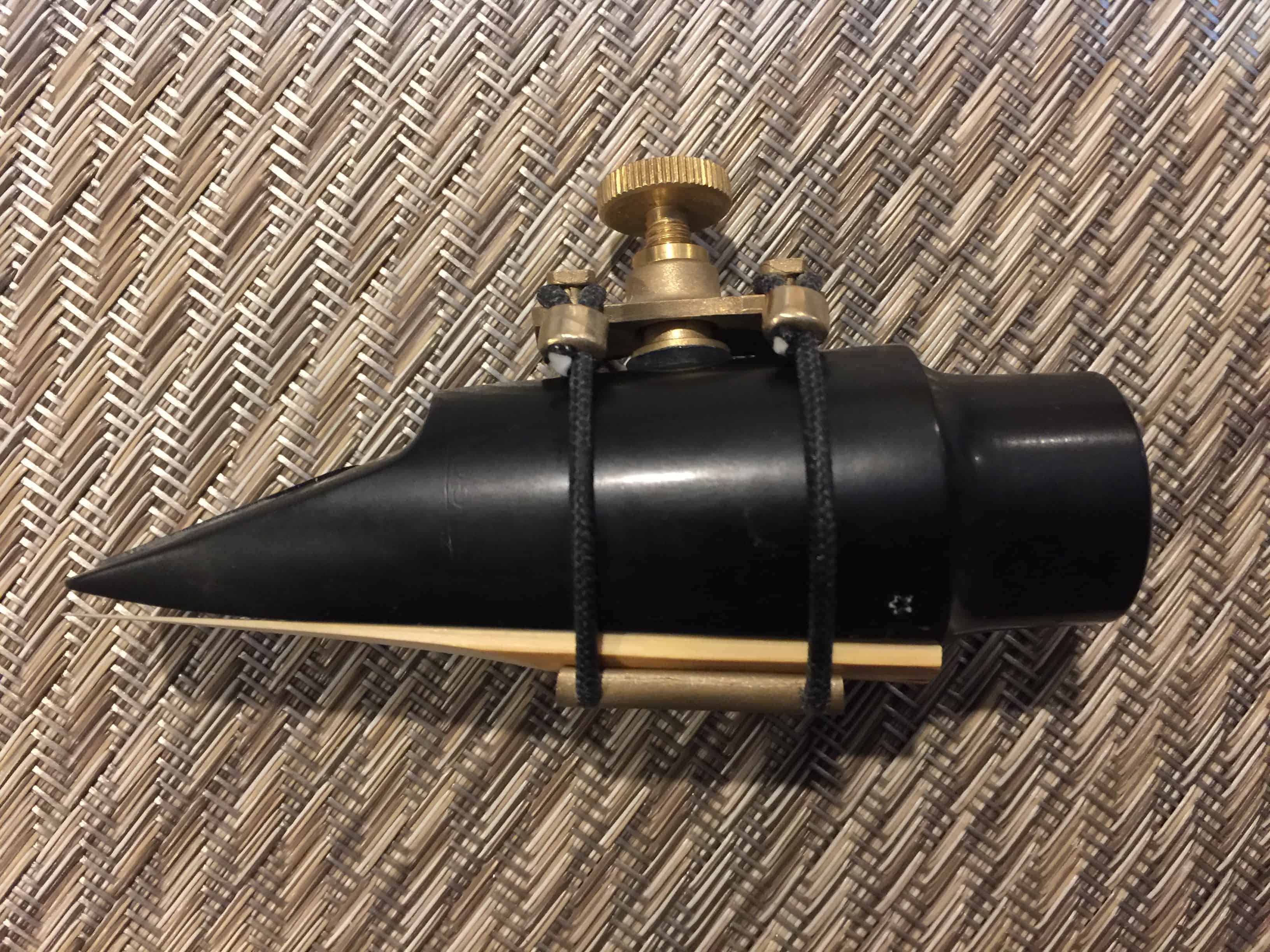


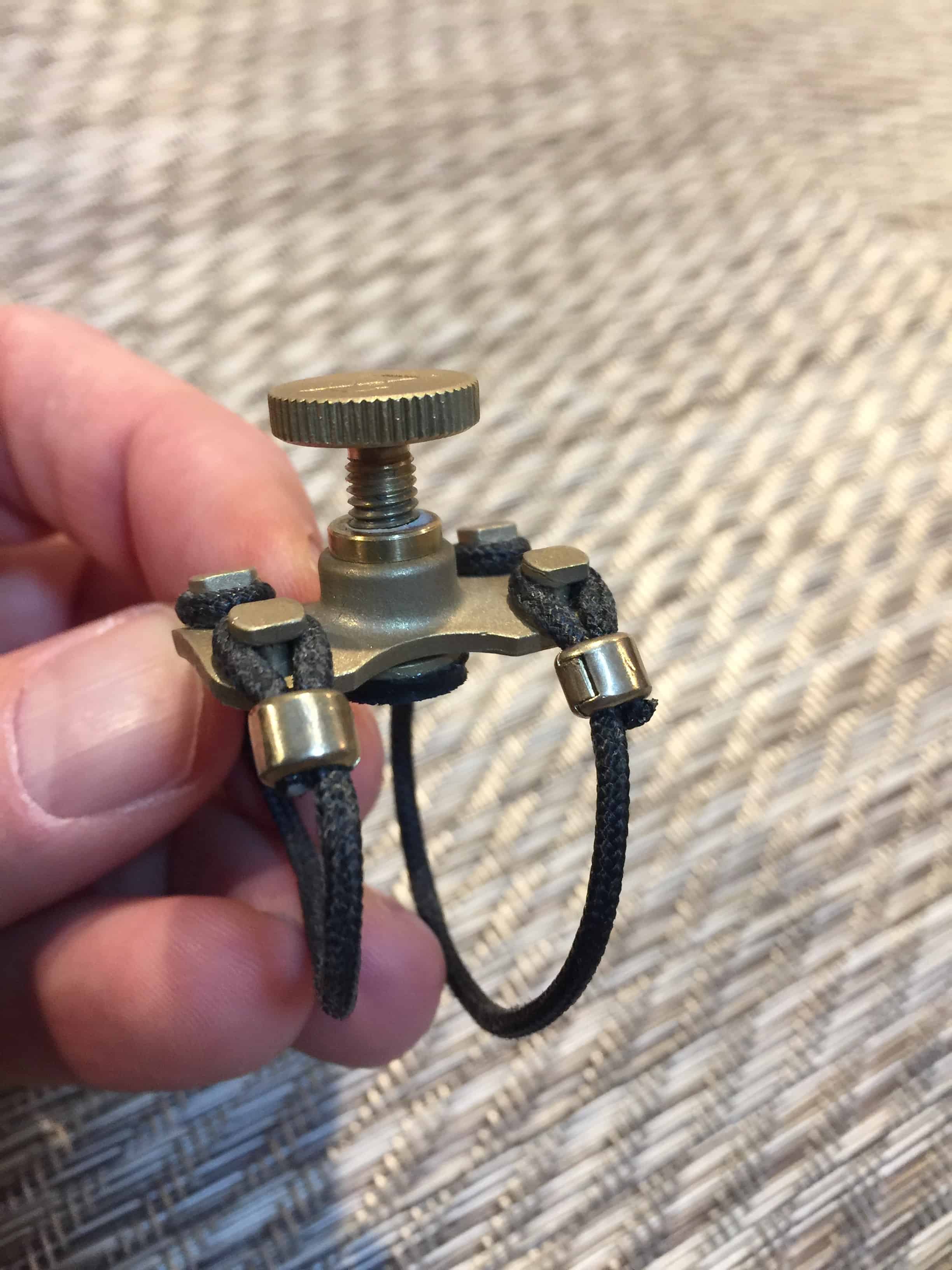



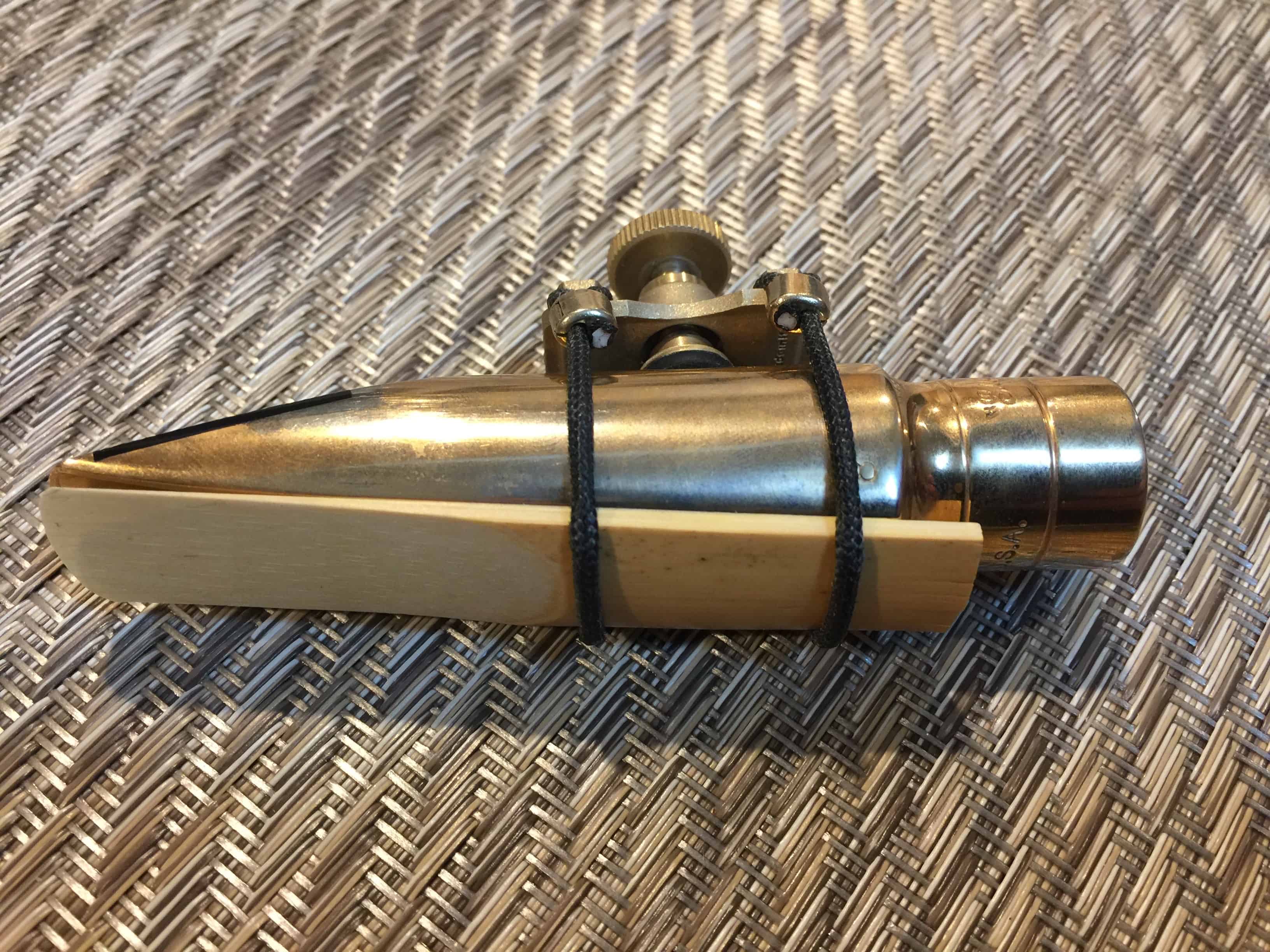


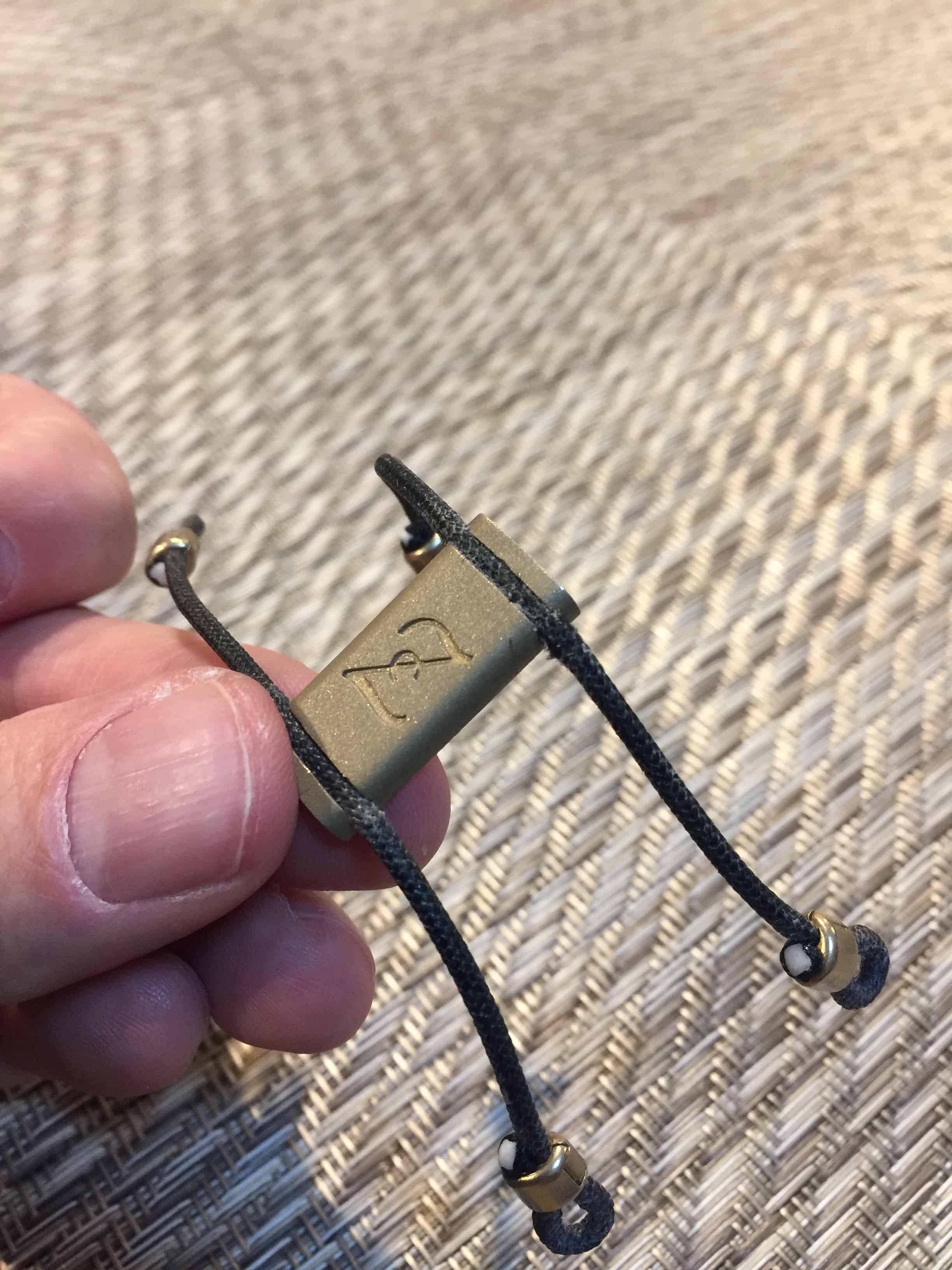
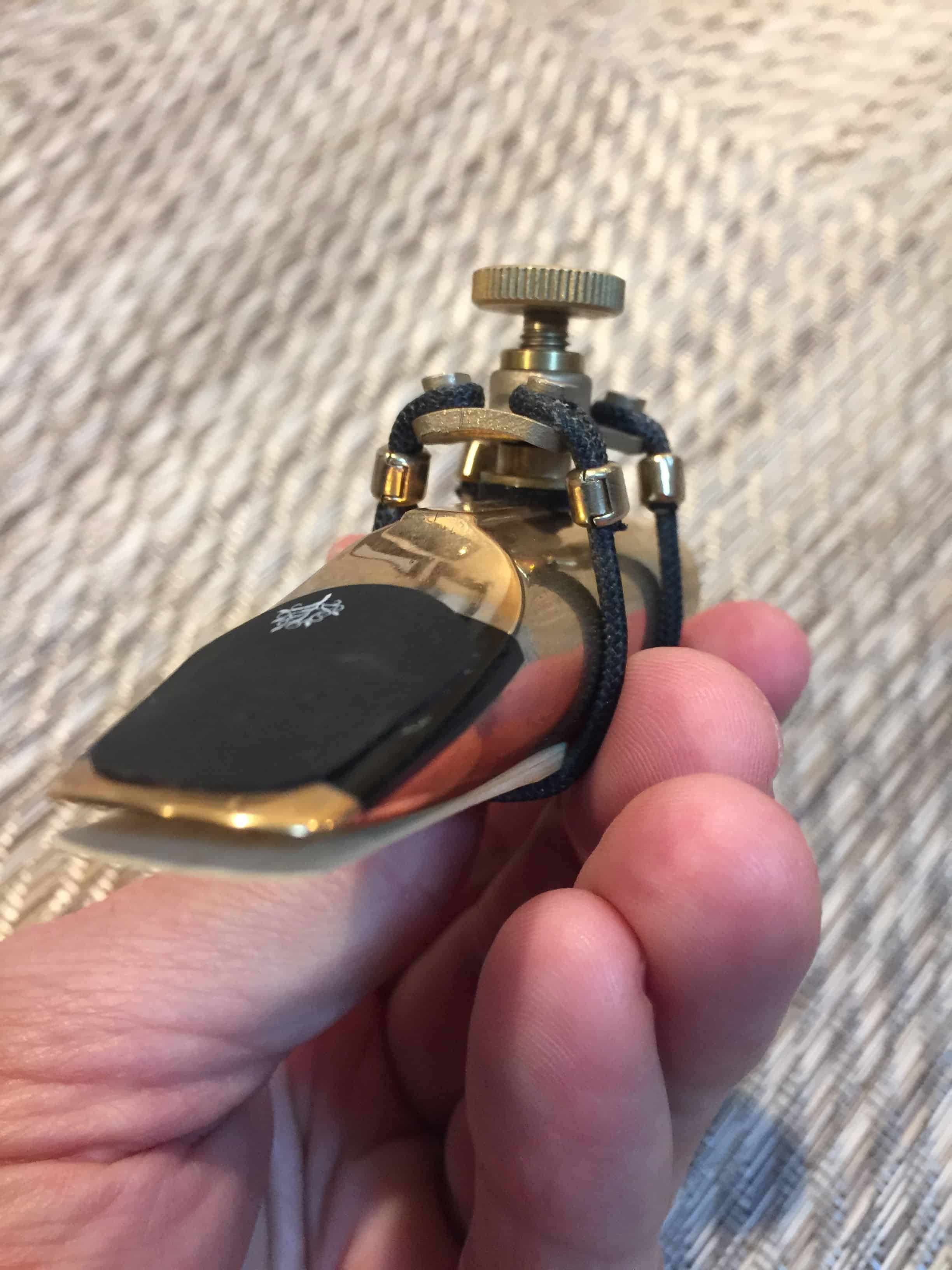

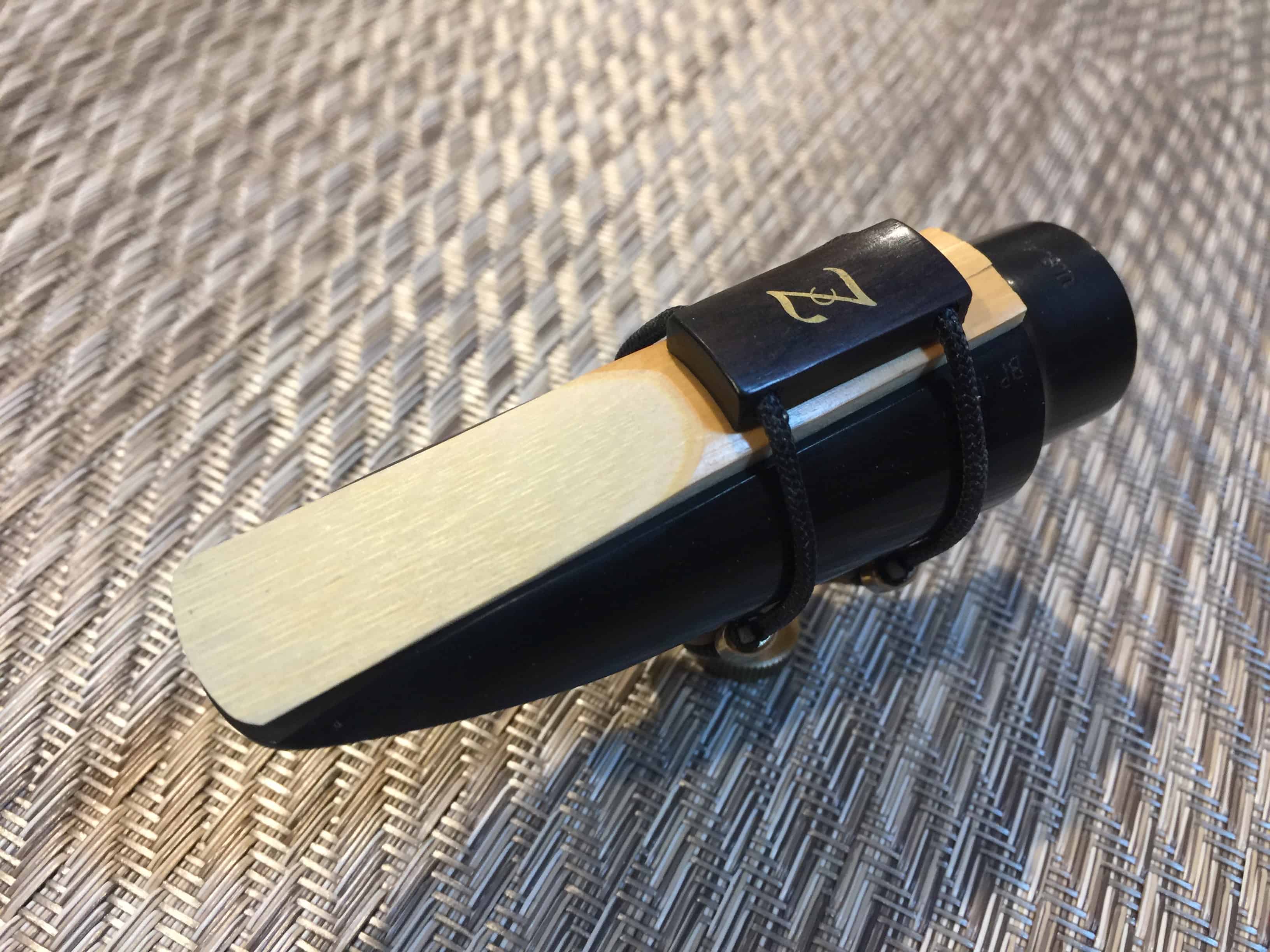






This looks to be as simple as you can get. Did you find any similarity to the response of the Silverstein? The plates are obviously different and the number of strands, plates apart does the fewer number of cables have any noticeable effect?
Jim, I honestly forgot about the Silverstein! It was 7-8 years ago and they wanted me to buy it after the review so I sent it back to them. I remember really liking the Silverstein but I don’t remember any details about it. I was asked this question on Facebook and someone who has used both responded:
You can clearly hear the differences, to me the brass plate and the cables alone were very similar but I found the cables brighter, or perhaps livelier. In any case all sounded better than the standard lig. Did you notice any difference in response?
That’s good to hear. I thought I could hear the differences clearly but sometimes I put up clips like these and I get inundated with comments that people hear no difference whatsoever. I’m glad you heard a difference.
As far as response, besides the details I put in the review, the biggest difference for me was when I went to the cables on the reed. I just felt like the reed was more alive and responded quicker and fuller. That was my favorite setup of the three because of that reason.
I want to do the same test on a bright metal Otto Link with a baffle I have and see what the three ligature setups do for a brighter mouthpiece like that. I would say the hard rubber Otto Link 8 I used for this test is slightly brighter but more in the middle than really bright. To really see how a ligature affects the tone I find it really useful to test them with a dark mouthpiece, medium mouthpiece and bright mouthpiece. If the results are interesting maybe I’ll do anther review on it…….
I’ve been using a Zac ligature on a 1AO for about a year. Bought the Zac from Roberto’s, NYC. I also use a Silverstein on occasion. Guess I’m fickle. I’m sure you understand.
Both ligatures are excellent. Your comments are appreciated particularly because you reminded me that the Zac can be used without the brass plate. Going to give that a try.Thanks
How much flexibility is there in the sizing. I play an RPC which is a tad bigger I think, would the Link lig extend to fit that or would I need a custom job?
Jim, I am not sure as I have tried a number of RPC tenor mouthpieces and many of them were totally different sizes. Zac ligatures has this PDF on how to measure the mouthpiece that they sent me. You take 5 measurements M1,M2,M3,M4 and M5 in mm and send those to them and they can make sure the cables are the exact size for your mouthpiece. The measurements are important especially for mouthpieces with an unusual taper to the body. Hope this helps, Steve
https://cdn.neffmusic.com/2021/Spaccato-misure-Zac-Ligature_.pdf
Thanks Steve, I’ve been in touch with Alberto and he has just sent me the PDF. Unfortunately we are also having to have discussions about shipping from Italy to the UK. This is much more difficult than it was last year because of leaving the EU, and few people seem to be able to get to grips with it, I certainly can’t. Alberto is being very helpful and checking options. Of course this runs the risk of me getting so obsessed with having one that I can’t let it go, but the import costs could get so high that I might as well buy a Silverstein locally. I wondered about the standard sizing as it would almost be easier to wait until I can travel to Italy and buy one in a shop.
Hello, again…
Listening to the comparisons I like the “roundness” of the “string only”…
I might be a little prejudiced as, on Tenor, I use a Silverstein CRYO4 on my HR 9* 10mFan Merlot and Custom Beechler Tonalex 7 (?)…
So far, I’ve found that “string ligatures” do allow the reed to resonate (vibrate) more than simply choking them with other style ligatures… although I will occasionally use a Rovner Versa with no plates, 1/8 clockwise from having a loose reed…
NOW, you’ve piqued my curiosity… my 12* Custom Lawton Tenor mouthpiece…
I’ve used either his stock, attached ligature OR a Versa X (set same as above)…
I just may have to check one out…
It seems like Roberto’s is Sold Out… of ALL styles… PLUS have sent an Email to Zac to find out what size I need for the Lawton…
Hopefully, I can find the correct size for my Lawton…
Pat
I finally got hold of a Zac ligature, the one with the brass plate and I’ve tried it with and without the plate. I agree with Steve about the tone seeming richer and bigger, quite a bit in fact, using just the cords, and with the resonator it was much brighter and had more snap to it. Both are equally good depending upon what you want. In terms of volume I’m not sure about the difference but the increased brightness certainly seems to cut more.
In terms of construction it is very high quality, it tightens easily and efficiently, holds the reed securely and I expect it to give many years of service. I would recommend it to anyone just for the quality of the product as well as to those of us who think the lig does make a difference, at least to how the player hears it.
The main problem seems to be getting your hands on one.